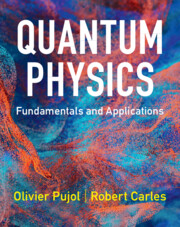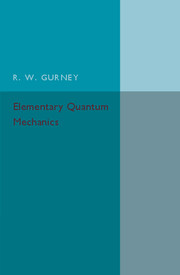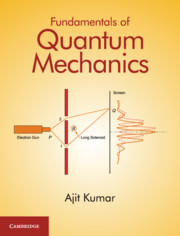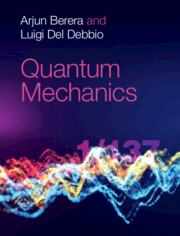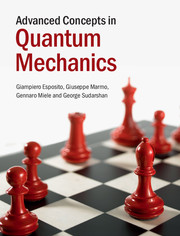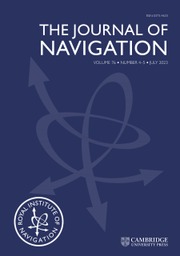Quantum Physics
An impressively comprehensive textbook adopting a phenomenological approach to quantum physics. The chapters cover everything from basic definitions of key concepts to detailed discussions of the underlying theoretical framework, walking students step-by-step through the necessary mathematics and drawing clear connections between the theory and the most important modern research applications including quantum optics, fluids, nanophysics, entanglement, information, and relativity. With this book, students and researchers will have access to hundreds of real-world examples, exercises, and illustrations to support and expand their understanding. Instructors can tailor the content to suit the length and level of their course and will have access to an online solutions manual with fully worked solutions to all 300+ exercises in the book. Other online resources include Python simulations, additional exercises, and detailed appendices.
- Master quantum physics with a textbook that spans everything from fundamental theories to modern applications
- Apply the theory to important research problems with hundreds of real-world examples and orders of magnitude, including quantum optics, nanophysics, quantum fluids, entanglement, relativistic quantum physics, and information
- Practice at your own pace with over 300 end-of-chapter exercises designed to assess and extend understanding, with a complete solutions manual available online for instructors
- Explore topics further with over 500 scientific references that dive deeper into the research, history and philosophy underpinning the field
- Teach your course your way with 28 chapters and 6 online appendices plus Python scripts that can be tailored to single or two semester courses at the undergraduate or graduate level
Product details
April 2026Hardback
9781009549585
843 pages
254 × 203 mm
Not yet published - available from April 2026
Table of Contents
- Preface
- Constants, Notation, Units and Dimensions
- 1. What is quantum physics?
- 2. Early quantisation: of light–-matter interactions
- 3. Light absorption and emission: Einstein's coefficients
- 4. Modern aspects of photons
- 5. De Broglie's hypothesis and Heisenberg's spatial inequality
- 6. Schrödinger's equation: scattering (or free) states
- 7. Tunnelling and one-dimensional scattering
- 8. Confinement and bound states
- 9. Harmonic oscillators
- 10. Coupled oscillators or quantum wells
- 11. The transfer matrix approach
- 12. Rotation and angular momentum
- 13. Two-state systems and spin
- 14. Postulates and formalism of quantum physics
- 15. Sy indistinguishability and identical systems
- 16. Symmetries and conservation laws
- 17. Conservative systems
- 18. Combination of angular momenta
- 19. Stationary perturbations and approximation methods
- 20. Atoms and molecules
- 21. Quantum description of solids
- 22. Reduced-dimensional systems and nanophysics
- 23. Nuclei and 'Particles': clusters
- 24. Quantum scattering in three dimensions
- 25. Non-conservative systems: induced transitions and relaxation
- 26. Entanglement, measurement and decoherence
- 27. Electromagnetic field quantisation
- 28. Quantum physics and special relativity
- Afterword
- Further reading
- Glossary
- Index.

